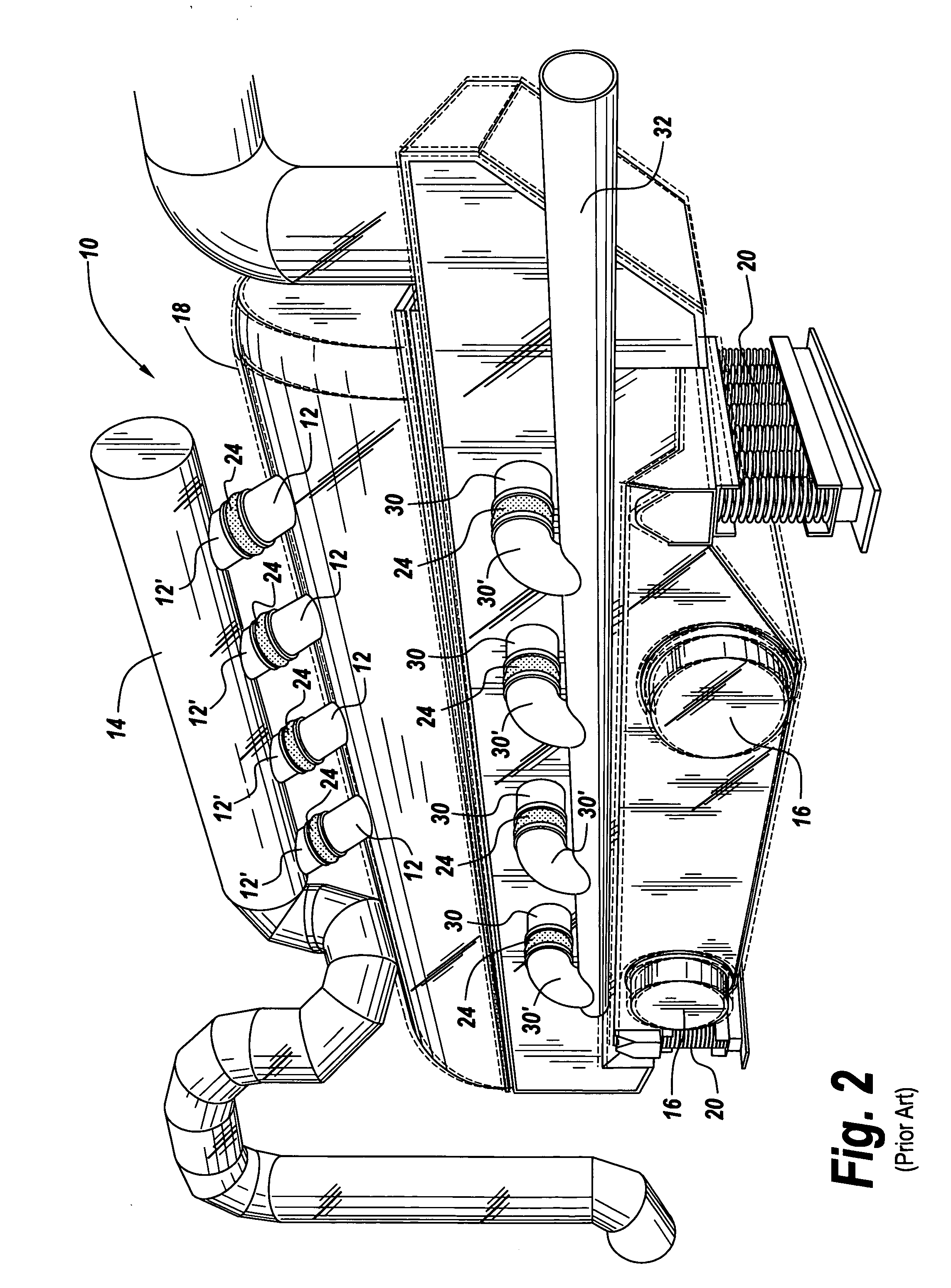Torrefaction/gassification system
a technology of gassification system and turbine, which is applied in the direction of manufacturing tools, semiconductor/solid-state device details, lighting and heating apparatus, etc., can solve the problems of syngas entering the facility, affecting the safety of workers, so as to limit the possibility of syngas leakage
- Summary
- Abstract
- Description
- Claims
- Application Information
AI Technical Summary
Benefits of technology
Problems solved by technology
Method used
Image
Examples
Embodiment Construction
Prior Art
[0032]Referring now to FIG. 1, a reactor 10 in the form of a modified Carrier vibratory dryer includes syngas ducting conduits 12 which are coupled to a manifold 14 for capturing the syngas generated by the reactor. As illustrated, off center weights in modules 16 cause the entire reactor to vibrate as illustrated by the dotted lines 18, with reactor mounted on springs 20 to permit the vibrating. Here the biomass is introduced at duct work 22 so that it travels down the interior of the reactor to produce biocoal.
[0033]Referring to FIG. 2, the other side of reactor 10 is shown in which duct work 12 is shown coupled to the aforementioned manifold 14, with the joints between the duct work and the portions of the conduit 12′ joined through the utilization of a gland 24 which permits movement between conduits 12 and 12′ with the motion 18 of reactor 10 and manifold 14. Also shown are inlet conduits 30 which have glands 24 interposed between conduits 30 and the exterior portions ...
PUM
| Property | Measurement | Unit |
|---|---|---|
| Efficiency | aaaaa | aaaaa |
| Temperature | aaaaa | aaaaa |
| Weight | aaaaa | aaaaa |
Abstract
Description
Claims
Application Information
 Login to View More
Login to View More - R&D
- Intellectual Property
- Life Sciences
- Materials
- Tech Scout
- Unparalleled Data Quality
- Higher Quality Content
- 60% Fewer Hallucinations
Browse by: Latest US Patents, China's latest patents, Technical Efficacy Thesaurus, Application Domain, Technology Topic, Popular Technical Reports.
© 2025 PatSnap. All rights reserved.Legal|Privacy policy|Modern Slavery Act Transparency Statement|Sitemap|About US| Contact US: help@patsnap.com



